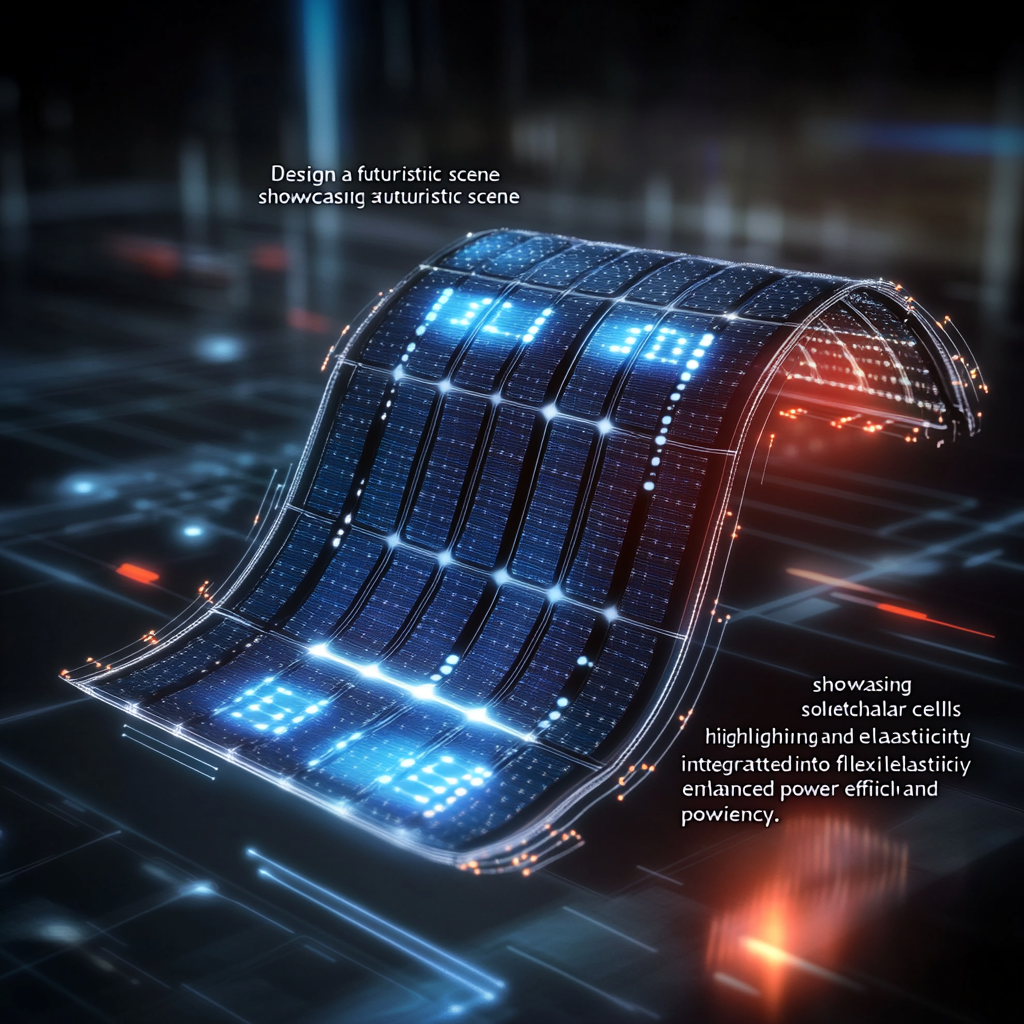
Flexible Solar Cells Enhanced by Organic Compound
Let’s dive headfirst into a world where renewable energy is no longer just a dream, but a stretchable reality—yes, that's right! We’re talking about organic solar cells, the kind of tech that’s poised to fit snugly into your favorite fitness tracker or even those ultra-cool wearable gadgets that will have you wondering why your watch wasn’t powering itself all along.
Now, before we get too tangled in the technical weeds, let’s acknowledge the elephant in the room. Traditional solar cells? They can be stiff and utterly unyielding. Kind of like your uncle after one too many holiday eggnogs. Fantastic for rooftops and sprawling fields, but not exactly the ideal companion for the human body or tight spaces. The quest has been, and will continue to be, twofold: make these solar panels flexible (imagine a world where solar cells can take a bend or two) while ensuring they still churn out the electricity we crave.
Enter the wonderful wizards of cutting-edge research! Recently, a team over at KAIST, led by Professor Bumjoon Kim, revealed an enchanting breakthrough encapsulated in the pages of the journal Joule. This was not just any old solution—they crafted a new conductive polymer material that’s tougher and stretchier than a pair of yoga pants. Ladies and gentlemen, we’re now looking at the highest-performing stretchable organic solar cell on the market!
Okay, let’s break this down—think of conjugated polymers as the glue holding our newfound solar secrets together. By chemically bonding a highly elastic polymer with an electrically conductive one, these researchers concocted a material that’s not only shockingly efficient but can also stretch up to a whopping 40%! That’s a stretchability factor that leaves other devices looking like they got stuck in an uncomfortable chair.
Now, for all you curious minds, let’s get into the nitty-gritty—how do they pull off this impressive feat? It all boils down to how they’ve addressed the strain on the photoactive layer—the part that converts sunlight into power. Imagine you’re wearing a stretchy shirt when you dance; you still want to look good while you shake your groove thing. That’s what these scientists have engineered—delocalizing and redistributing the strain from the active layer to layers below it.
Using a highly flexible PEDOT:PSS electrode paired with some clever additives essentially sets the groundwork for a solar cell that’s as adaptable as a talented gymnast. Each twist and turn helps the device maintain its performance. Polymer engineering has entered the chat! Siloxane-terminated side chains and optimized molecular weights contribute to their stellar efficiency rates. In fact, the PBZ-2Si M based all-polymer solar cell boasts an efficiency conversion percentage that some would regard as downright magical at 7.01%.
Now, you might be wondering—what does this mean for the products we’ll be wrapping around ourselves in the future? Oh, the possibilities! Picture wearable devices that charge themselves while you take your morning jog. Strapping on a smartwatch that’s not just running your route but also powering up with the sunlight filtering through the trees—cue applause!
We’re talking smart fitness trackers that would be compatible with your mood swings and heart rate, all while making sure you never run out of battery. The exciting part? Even in the realm of medical devices that can be implanted, the stretchable solar cells could provide life-saving power! A device that powers itself while you, the fabulous human being, go about your day? Dinner and a show, if you ask me!
And let’s take this one step further: the manufacturing process of these solar cells also meshes seamlessly with eco-friendly practices. Using environmentally conscious materials and solvents implies that as we move toward increasingly innovative technology, we also remain responsible stewards of our planet. Renewable energy made from renewable practices? Now, that sounds like the perfect recipe for a sustainable future.
In conclusion, this leap forward in stretchable organic solar cells has immense potential, combining flexibility with efficiency. Imagine a future bursting at the seams with smart wearables, innovative gadgets, and devices that could fundamentally change the way we interact with energy in our daily lives. We’re on the precipice of revolutionizing how we power the world around us, and it feels exhilarating.
Are you excited to dive deeper into the realm of renewable energy and tech? Want to be the first to gain insights on the latest solar cell advancements? Don’t be left in the dark—let’s shine a light together! Subscribe to our Telegram channel: @channel_neirotoken
Remember, the future of energy is not just bright—it’s flexible and ready to stretch into every corner of our lives!

